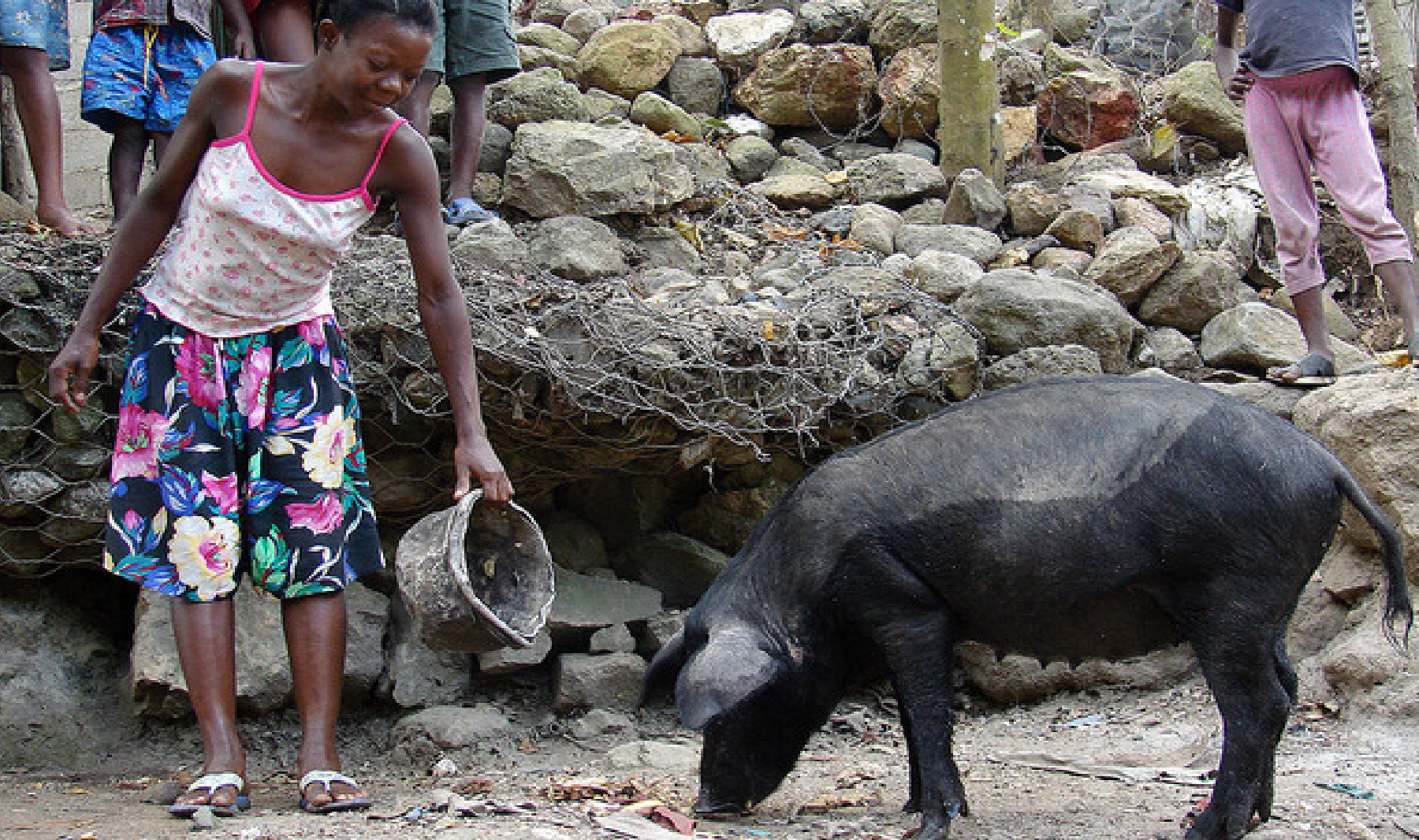 Sunday, September 16, 2012 |
Sunday, September 16, 2012 |  Hugh Locke
Hugh Locke Haiti’s Lost Creole Pigs
 Creole pigs were once an important part of the rural economy of Haiti.
Creole pigs were once an important part of the rural economy of Haiti.
Many people point to the slaughter of the country’s pig stock as helping to fuel the popular revolt that toppled Baby Doc Duvalier. Known as Creole pigs, or “cochon-planches,” these small, black, resilient hogs had long been more than just farm animals, but represented a savings bank that could be sold to pay for school fees, medical emergencies, weddings, or seed for crops. As such, they were a key component of the rural economy. In 1978, a highly contagious swine fever spread from Spain to Cuba to the Dominican Republic, and from there to Haiti, infecting a third of the pigs there. Fearing its spread to the United States, the American government pressed for the killing of all 1.2 million Creole pigs and by 1984 they were all gone. Although a good portion ended up in Duvalier’s pocket, the U.S. paid compensation to farmers and introduced new American breeds of pigs unsuited to conditions in Haiti. These new pigs were high maintenance; they would not eat scraps and needed special feed, required frequent trips to the vet, and had to have custom-built shelters. The new pigs died off quickly, the farm economy suffered a tremendous blow, and the Duvalier government was seen as responsible for the disaster.
This is an excerpt from The Haiti Experiment (Hawkeye Publishers; 2012) by Hugh Locke.













Reader Comments (1)
I regularly suffer from troubles with writing college papers, which is why when one of my friends offered me to buy essay on the Web, I detected that suggestion quite useful.